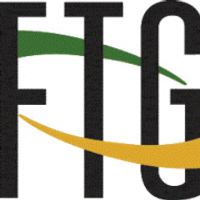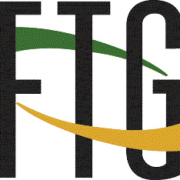
Firan Technology Group Corp
TSX:FTG


| US |

|
Johnson & Johnson
NYSE:JNJ
|
Pharmaceuticals
|
| US |

|
Berkshire Hathaway Inc
NYSE:BRK.A
|
Financial Services
|
| US |

|
Bank of America Corp
NYSE:BAC
|
Banking
|
| US |

|
Mastercard Inc
NYSE:MA
|
Technology
|
| US |

|
UnitedHealth Group Inc
NYSE:UNH
|
Health Care
|
| US |

|
Exxon Mobil Corp
NYSE:XOM
|
Energy
|
| US |

|
Pfizer Inc
NYSE:PFE
|
Pharmaceuticals
|
| US |

|
Palantir Technologies Inc
NYSE:PLTR
|
Technology
|
| US |

|
Nike Inc
NYSE:NKE
|
Textiles, Apparel & Luxury Goods
|
| US |

|
Visa Inc
NYSE:V
|
Technology
|
| CN |

|
Alibaba Group Holding Ltd
NYSE:BABA
|
Retail
|
| US |

|
JPMorgan Chase & Co
NYSE:JPM
|
Banking
|
| US |

|
Coca-Cola Co
NYSE:KO
|
Beverages
|
| US |

|
Walmart Inc
NYSE:WMT
|
Retail
|
| US |

|
Verizon Communications Inc
NYSE:VZ
|
Telecommunication
|
| US |

|
Chevron Corp
NYSE:CVX
|
Energy
|
Utilize notes to systematically review your investment decisions. By reflecting on past outcomes, you can discern effective strategies and identify those that underperformed. This continuous feedback loop enables you to adapt and refine your approach, optimizing for future success.
Each note serves as a learning point, offering insights into your decision-making processes. Over time, you'll accumulate a personalized database of knowledge, enhancing your ability to make informed decisions quickly and effectively.
With a comprehensive record of your investment history at your fingertips, you can compare current opportunities against past experiences. This not only bolsters your confidence but also ensures that each decision is grounded in a well-documented rationale.
Do you really want to delete this note?
This action cannot be undone.

| 52 Week Range |
6.86
12.83
|
| Price Target |
|
We'll email you a reminder when the closing price reaches CAD.
Choose the stock you wish to monitor with a price alert.

|
Johnson & Johnson
NYSE:JNJ
|
US |

|
Berkshire Hathaway Inc
NYSE:BRK.A
|
US |

|
Bank of America Corp
NYSE:BAC
|
US |

|
Mastercard Inc
NYSE:MA
|
US |

|
UnitedHealth Group Inc
NYSE:UNH
|
US |

|
Exxon Mobil Corp
NYSE:XOM
|
US |

|
Pfizer Inc
NYSE:PFE
|
US |

|
Palantir Technologies Inc
NYSE:PLTR
|
US |

|
Nike Inc
NYSE:NKE
|
US |

|
Visa Inc
NYSE:V
|
US |

|
Alibaba Group Holding Ltd
NYSE:BABA
|
CN |

|
JPMorgan Chase & Co
NYSE:JPM
|
US |

|
Coca-Cola Co
NYSE:KO
|
US |

|
Walmart Inc
NYSE:WMT
|
US |

|
Verizon Communications Inc
NYSE:VZ
|
US |

|
Chevron Corp
NYSE:CVX
|
US |
This alert will be permanently deleted.
Firan Technology Group Corp
Firan Technology Group Corp. engages in the provision of aerospace and defense electronics product. The company is headquartered in Scarborough Ontario, Ontario and currently employs 450 full-time employees. The firm operates through two segments: FTG Circuits and FTG Aerospace. FTG Circuits is a manufacturer of technology printed circuit boards. Its customers operate in the aviation, defense and technology industries. FTG Circuits has operations in Toronto, Ontario, Chatsworth, California, Fredericksburg, Virginia and a joint venture in Tianjin, China. FTG Aerospace manufactures and repairs illuminated cockpit panels, keyboards and sub-assemblies for original equipment manufacturers of aerospace and defense equipment. FTG Aerospace has operations in Toronto, Ontario, Chatsworth, California, Fort Worth, Texas and Tianjin, China. Its products include Semi Additive Process, high density interconnects, rigid flex, aerospace chassis and assembly, backlit control panels and assemblies.

Firan Technology Group Corp. engages in the provision of aerospace and defense electronics product. The company is headquartered in Scarborough Ontario, Ontario and currently employs 450 full-time employees. The firm operates through two segments: FTG Circuits and FTG Aerospace. FTG Circuits is a manufacturer of technology printed circuit boards. Its customers operate in the aviation, defense and technology industries. FTG Circuits has operations in Toronto, Ontario, Chatsworth, California, Fredericksburg, Virginia and a joint venture in Tianjin, China. FTG Aerospace manufactures and repairs illuminated cockpit panels, keyboards and sub-assemblies for original equipment manufacturers of aerospace and defense equipment. FTG Aerospace has operations in Toronto, Ontario, Chatsworth, California, Fort Worth, Texas and Tianjin, China. Its products include Semi Additive Process, high density interconnects, rigid flex, aerospace chassis and assembly, backlit control panels and assemblies.
Revenue Growth: FTG reported Q3 revenue of $47.7 million, up 11% over Q3 last year, in line with expectations despite seasonal production challenges.
Bookings & Backlog: Bookings reached $51.5 million this quarter, driving backlog to $137 million, a 12% increase from the previous year-end.
Aerospace Performance: Aerospace segment sales rose 25% year-over-year, mainly due to the FLYHT acquisition.
Profitability: Adjusted EBITDA grew to $7.7 million and net earnings increased by 5.9% to $2.9 million.
FLYHT Acquisition: FLYHT was profitable for a second straight quarter, with its AFIRS Edge+ product gaining market traction and new orders in Asia.
Geographic Expansion: Sales outside the U.S. surged, with 12% growth in Asia and 140% in Europe, reducing customer concentration in the U.S.
Margins & Cash Flow: Gross margin reached 30.3%; operating cash flow less lease payments was $5.5 million.
Guidance: Management expects continued strong demand, with over $60 million of backlog due in Q4 and ongoing benefit from higher-value assembly orders.





























